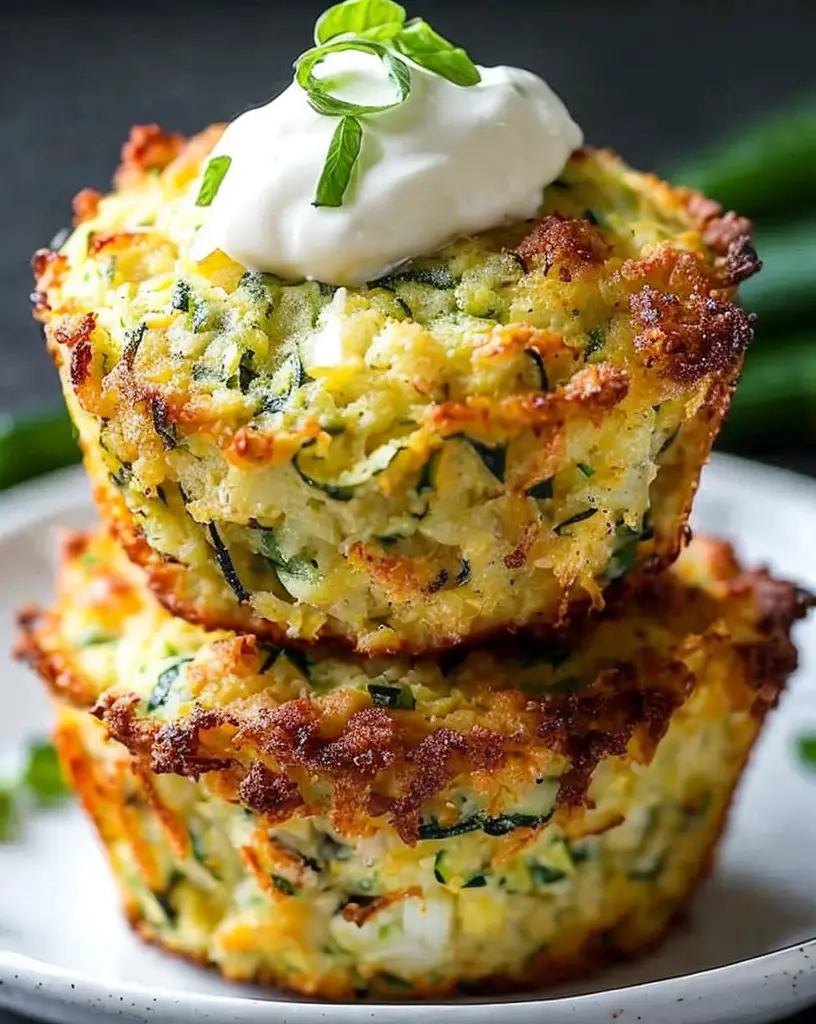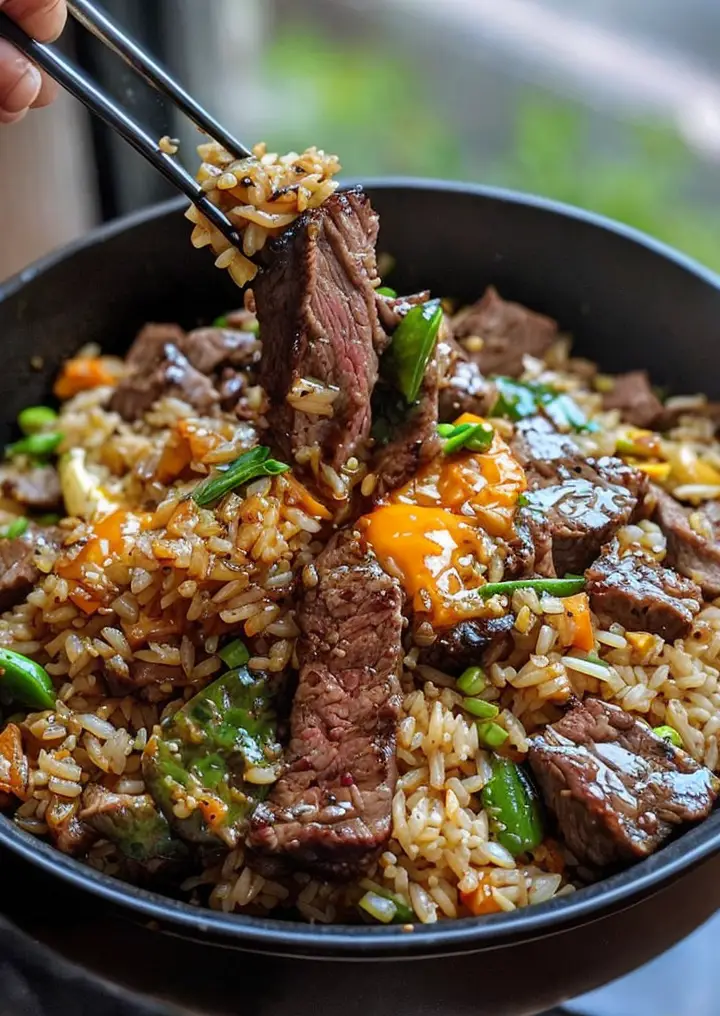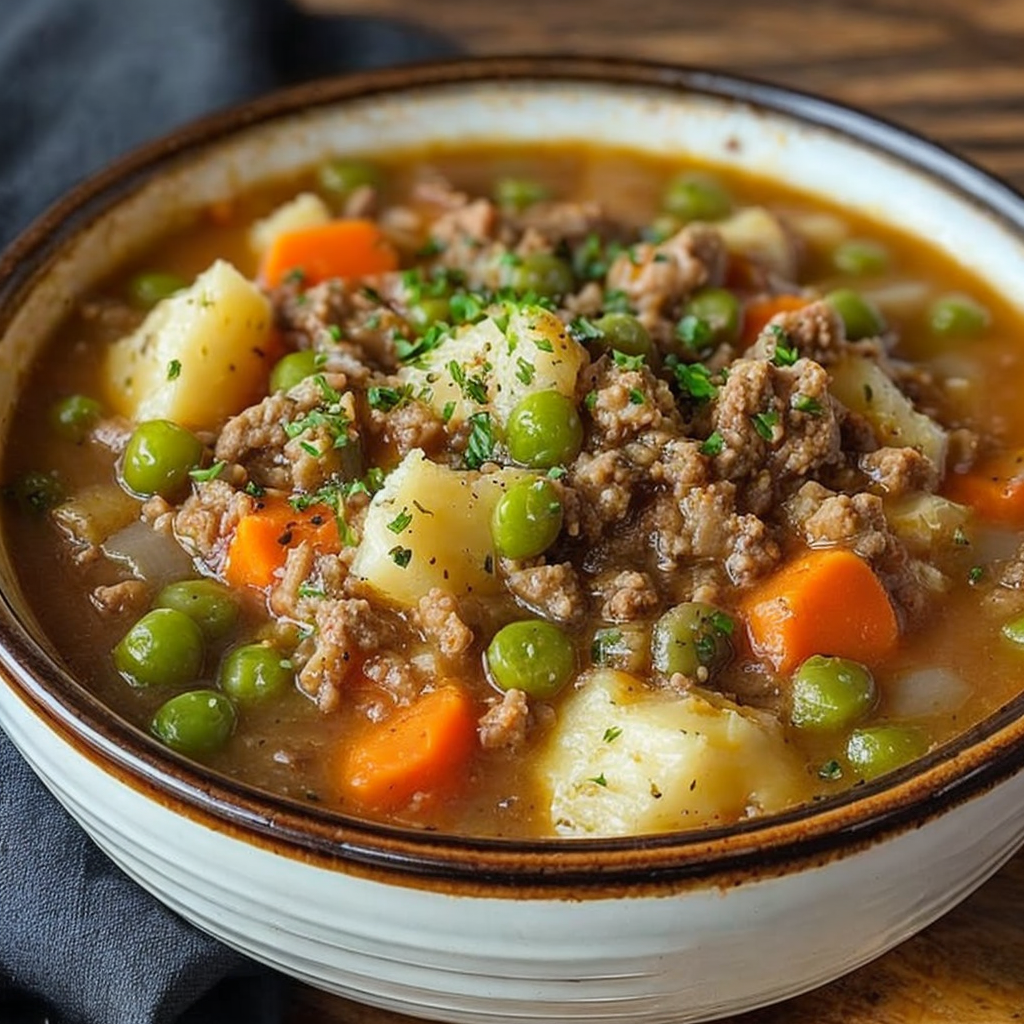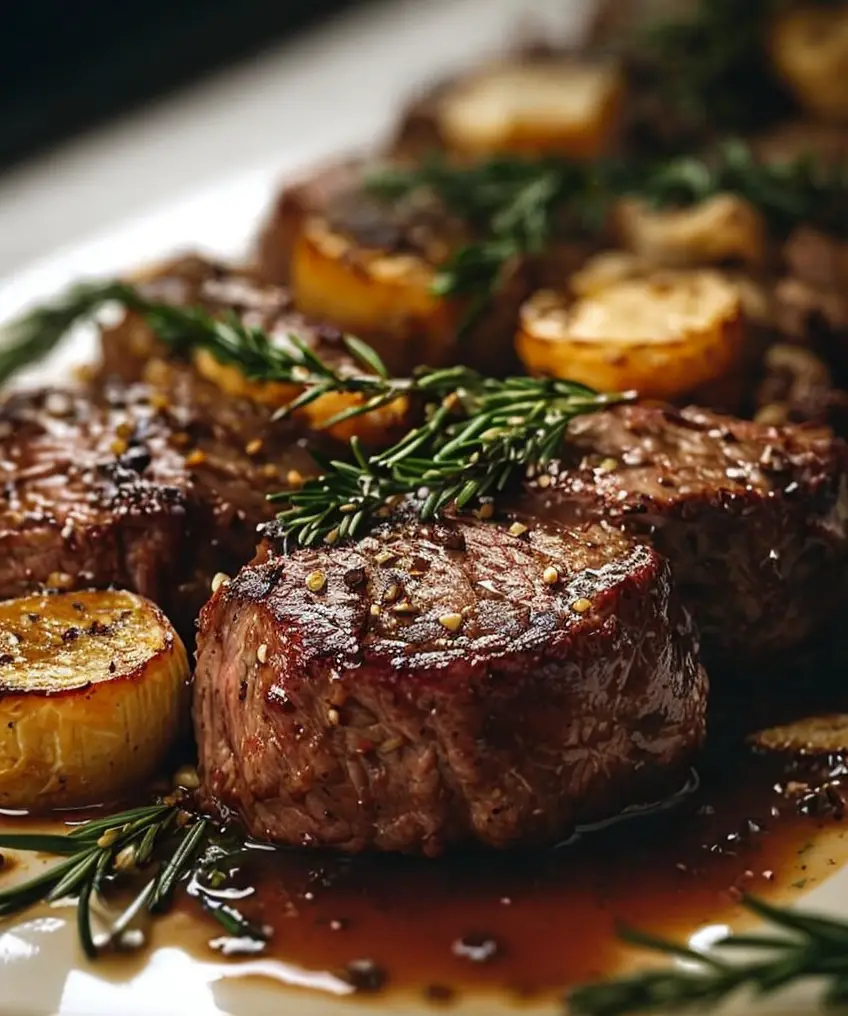Parmesan Zucchini Potato Muffins: A Savory Delight for All
Parmesan Zucchini Potato Muffins are a delightful combination of savory flavors and nutritious vegetables. The rich, nutty taste of Parmesan cheese melds perfectly with the moisture of zucchini and the earthiness of potatoes, creating a muffin that’s not only delicious but also satisfying. Each bite delivers a hearty texture, making these muffins a wonderful choice for breakfast, a snack, or even as a side dish to complement your meals.
These muffins are perfect for those who are looking to enjoy wholesome ingredients packed into a tasty format. With their appealing golden-brown crust and tender center, Parmesan Zucchini Potato Muffins not only taste amazing but also look tempting on the table. The aroma of baked Parmesan and fresh vegetables fills the kitchen, inviting everyone to enjoy them right out of the oven.
Quick Recipe Highlights
- Flavor Profile: A scrumptious blend of cheesy, savory, and subtly herbaceous notes from the zucchini and potatoes, balanced with the richness of Parmesan.
- Texture: Each muffin has a soft, moist interior with a slightly crispy exterior, providing a satisfying contrast.
- Aroma: The delightful scent of baked cheese and fresh herbs wafts through the air, elevating your dining experience.
- Visual Appeal: These muffins present beautifully with their golden tops, flecks of green zucchini, and inviting overall look.
- Skill Level Needed: An easy recipe for all skill levels, perfect for beginner cooks looking to impress.
- Special Equipment: Just a muffin tin and a mixing bowl, making this recipe accessible and convenient.
Recipe Overview
- Difficulty Level: This recipe is categorized as easy due to straightforward steps and minimal ingredients. It’s ideal for beginners who want to create something delicious without getting overwhelmed.
- Category: These muffins can serve as breakfast items, snacks, or side dishes, making them versatile for any meal of the day.
- Cuisine: While not traditionally tied to a specific cuisine, this recipe draws influences from Mediterranean flavors through the use of Parmesan cheese and fresh vegetables.
- Cost: With affordable ingredients like potatoes and zucchini, these muffins offer a budget-friendly option for satisfying your savory cravings.
- Season: Zucchini is commonly available in summer but can be found year-round, making this recipe adaptable to various seasons.
- Occasion: Perfect for brunch gatherings, potlucks, or family breakfasts. These muffins are sure to become a crowd favorite.
Why You’ll Love This Recipe
These Parmesan Zucchini Potato Muffins are not only delicious but also incredibly appealing in terms of taste and texture. The savory blend of ingredients creates a muffin that is rich and satisfying, while the addition of zucchini keeps them moist and tender, ensuring you can enjoy them for any meal. Whether paired with a salad or enjoyed alone, these muffins provide a delightful burst of flavor.
For busy individuals and families, the convenience of this recipe is a major plus. The muffins can be made in advance and stored for later meals, making them an excellent solution for quick breakfasts on hectic mornings. They are easy to grab on the go, providing a wholesome option without sacrificing flavor.
Nutritionally, these muffins shine due to the inclusion of zucchini and potatoes, both of which are packed with vitamins and minerals. Zucchini is a low-calorie vegetable that adds fiber and helps keep you feeling full, while potatoes provide a good source of carbohydrates, making these muffins an excellent energy booster.
When it comes to entertaining, these muffins serve well for guests, proving to be a hit at gatherings. Whether serving them at a brunch or a picnic, they are easy to share and encourage conversation around the table. People will love to know your secret for making such delightful muffins!
Additionally, the cost-effectiveness of this recipe cannot be ignored. With affordable ingredients and the option to freeze leftovers, these muffins are an accessible and practical option for anyone looking to enjoy delicious food without breaking the bank.
Historical Background and Cultural Significance
The origins of zucchini muffins can be traced back to regions where zucchini is a staple vegetable, particularly in Mediterranean cuisines. These regions have historically embraced the use of seasonal produce in their cooking, often incorporating what was fresh into versatile dishes such as muffins. Over time, the integration of cheese, particularly Parmesan, has made these muffins even more flavorful and appealing.
Culturally, such savory baked goods represent a trend towards healthier eating, focusing on incorporating vegetables into everyday meals. In many cultures, including Italian, the emphasis on using fresh ingredients and minimizing waste aligns with the philosophy behind these muffins. The goal is to create something delicious that makes the most of seasonal produce.
The evolution of this recipe has led to various adaptations, with some preferring additional spices or herbs to elevate the flavor. The basic concept of combining grains, vegetables, and cheese has remained popular due to its simplicity and adaptability for different palates.
Regional variations are seen in the way these muffins are prepared, as some areas may use local cheeses or experiment with additional ingredients. This adaptability has allowed the concept of cheesy vegetable muffins to transcend boundaries and capture the hearts of food lovers everywhere.
Ingredient Deep Dive
Zucchini: Zucchini is a versatile vegetable that has its roots in Southern Italy, where it thrives in warm climates. It is an excellent source of hydration thanks to its high water content and provides dietary fiber essential for digestive health. When selecting zucchini, look for firm specimens without soft spots, and store them in a cool place to maintain freshness.
Potatoes: Potatoes have a long history as a dietary staple around the world, originating from ancient Peru. Their carbohydrate content makes them a valuable source of energy, and they are rich in vitamins C and B6. Choose potatoes that are unblemished and firm, and store them in a dark, cool place to prevent sprouting.
Parmesan Cheese: Parmesan cheese, with its nutty flavor and granular texture, has been cherished in Italian cuisine for centuries. It is a rich source of calcium and protein that enhances various dishes. Use freshly grated Parmesan for the best flavor, and store it in an airtight container in the refrigerator to maintain its quality.
Common Mistakes to Avoid
- Over-mixing the batter: Mixing too much can lead to dense muffins; stir just until combined.
- Using overly wet zucchini: Squeeze out excess moisture from zucchini for better texture.
- Inaccurate ingredient measurements: Use a kitchen scale or measuring cups for precise amounts.
- Underbaking the muffins: Always check doneness with a toothpick; it should come out clean.
- Skipping the muffin liners or greasing the pan: This can cause muffins to stick; line or grease the pan properly.
- Not preheating the oven: Proper oven temperature is essential for the right rise and texture.
- Crowding the muffin tin: Leave space between muffins for even baking.
- Not allowing muffins to cool: Letting them cool in the pan can cause sogginess; transfer to a wire rack.
- Using low-quality cheese: Aged Parmesan adds depth; avoid pre-grated cheese for the best flavor.
- Ignoring ingredient freshness: Use fresh vegetables and cheese for optimal taste and nutrition.
Essential Techniques
Understanding how to combine dry and wet ingredients properly is crucial for perfect muffins. Begin by incorporating your dry ingredients into a separate bowl before gradually blending them with your wet mixture. This process not only enhances the aeration of the batter but also ensures that the muffins rise evenly, creating a pleasing texture.
Another important technique is to prepare your vegetables correctly. For zucchini, make sure to grate it finely and, if necessary, squeeze out excess water to prevent the muffins from becoming soggy. These simple steps enhance your muffins’ flavors and contributed texture, resulting in a delightful finished product.
Pro Tips for Perfect Parmesan Zucchini Potato Muffins
– Ensure the oven is fully preheated for even baking, as starting in a cold oven can lead to unevenly cooked muffins.
– Experiment with herbs: Adding fresh or dried herbs like thyme or oregano can elevate the flavor profile significantly.
– Use a mix of potato types for enhanced flavor and texture; for a gourmet touch, try mixing in sweet potatoes.
– For a unique twist, incorporate ingredients like sun-dried tomatoes or olives to give your muffins a Mediterranean flair.
– Allow the muffins to cool completely before storing to maintain freshness and prevent moisture build-up.
– Consider a dash of cayenne pepper for heat; it pairs surprisingly well with the richness of the cheese.
– For extra richness, swap half of the zucchini with grated carrots for a colorful twist.
– Freeze your muffins for long-term storage. They are a fantastic grab-and-go snack when you need something quick.
Variations and Adaptations
For a seasonal adaptation, consider incorporating diced bell peppers or corn in the summer for a fresh bite. In autumn, using pumpkin puree instead of some potato would add a lovely flavor while still keeping your muffins moist and flavorful.
When aiming for dietary modifications, simply substitute regular flour with almond or coconut flour for gluten-free options. For those avoiding dairy, consider using nutritional yeast and a dairy-free cheese alternative to flavor the muffins.
Flavor variations can also be achieved by adding spices such as smoked paprika or Italian seasoning, giving an unexpected twist to the classic recipe. Different cheese options, like feta or goat cheese, can also transform the overall flavor, allowing you to tailor the dish to your preferences.
Serving and Presentation Guide
For plating, arrange your muffins on a wooden board or platter to create a rustic feel. Garnishing with chopped herbs, such as parsley or basil, can add a splash of color and freshness to your presentation. Serve with a light dipping sauce or olive oil for a gourmet touch, enhancing the overall tasting experience.
Temperature plays a significant role in serving; muffins can be enjoyed warm or at room temperature, making them flexible for various meal settings. Consider pairing your muffins with scrambled eggs or a mixed green salad for a balanced meal, and keep portion sizes in check for a healthy approach.
Wine and Beverage Pairing
For wine pairings, a crisp Sauvignon Blanc complements the savory notes of the muffins beautifully, enhancing the overall dining experience. Alternatively, a fruity Chardonnay would also pair nicely, offering a creamy contrast to the texture.
If you’re seeking non-alcoholic alternatives, a refreshing herbal iced tea or sparkling lemonade can provide a delightful contrast to the savory flavors of the muffins. For those who enjoy coffee or tea, a light roast coffee would not overpower the flavor while providing a pleasant accompaniment.
Storage and Shelf Life
Proper storage is essential for keeping these muffins fresh. Store them in an airtight container at room temperature for up to three days. If you need to keep them longer, consider refrigerating them, where they will last for about a week.
Signs of spoilage include an off smell or unusual texture; always check before consuming stale muffins. When reheating, a quick microwave session or a brief time in a toaster oven will revive their original taste and texture.
For long-term storage, you can freeze the muffins. Place them in a freezer-safe bag, and they will keep for up to three months. To enjoy, simply thaw them in the refrigerator overnight or enjoy them directly from the freezer for a chilled treat.
Make Ahead Strategies
To make your life easier, prepare the batter the night before and store it in the refrigerator. This way, you can simply fill the muffin tins in the morning and bake them fresh. Alternatively, fully bake the muffins in advance and cool them completely before storage.
You can store batter between steps by chilling any prepared ingredients separately, ensuring freshness while maintaining the quality for baking later. Given that the muffins will still rise during baking, this strategy helps preserve flavor.
Finally, for the best quality, consider adding fresh elements such as a dollop of pesto or a sprinkle of fresh herbs right before serving, enhancing both flavor and presentation.
Scaling Instructions
If you’re planning to halve the recipe, ensure you adjust the baking time accordingly; smaller batches typically bake faster. Always keep an eye on the muffins and perform the toothpick test for doneness.
When doubling or tripling the recipe, consider using multiple muffin tins to speed up the process. You may also choose to bake them in batches or adjust the oven racks to accommodate larger quantities.
Timing is crucial when scaling; larger batches could have different baking times, so always plan for additional minutes as needed. Additionally, ensure that your mixing bowl and muffin tins are large enough to handle the increased volume without causing spillovers.
Nutritional Deep Dive
Understanding the nutritional benefits of your ingredients will enhance your appreciation of these muffins. The base of zucchini and potatoes provides essential vitamins and minerals, contributing to overall health. Zucchini is particularly low in calories yet high in antioxidants, making it a great addition to any diet.
Parmesan cheese contributes protein and calcium but can also be higher in sodium. Balancing the muffin’s ingredients helps control this while maximizing nutrient intake.
A typical muffin offers a balanced macros profile, giving you energy from complex carbohydrates while providing fiber from the zucchini. Portion control is essential, especially if mindful of caloric intake, so enjoy these muffins while staying within your dietary goals.
Dietary Adaptations
For gluten-free options, substitute regular flour with a gluten-free blend or almond flour—a great way to ensure everyone can enjoy these muffins.
Those who are dairy-free can replace Parmesan with nutritional yeast and a dairy-free cheese alternative, ensuring that flavour is still vibrant and cheesy without the dairy. This adaptation retains the delicious essence of the original recipe.
Vegans can easily swap out the eggs for flax eggs or applesauce, making them not only egg-free but also suitable for those following plant-based diets. Exploring low-carb variations by using cauliflower rice instead of potato can be another great alternative.
Troubleshooting Guide
If you encounter texture issues, such as overly dense muffins, check if you may have over-mixed the batter or added excess moisture. Allowing the batter to rest for a few minutes can also yield a lighter texture.
Flavor balance problems can often be attributed to under-seasoning—make sure to taste the batter before baking, and don’t shy away from extra seasoning as needed.
For temperature-related challenges, ensure that the muffins are baked at the correct temperature, as ovens can vary. Adjusting the rack position can also affect results; lower racks often yield more even baking.
If substitutions have led to unexpected results, revisit the proportions you’ve used, as some ingredients may not provide the same structure or flavor. Lastly, maintain proper timing to ensure everything is baked to chewy perfection.
Recipe Success Stories
Many readers have shared their delightful experiences with Parmesan Zucchini Potato Muffins, praising their flavor and ease of preparation. Community feedback often highlights how families enjoy these muffins for brunch or even as part of school lunches.
Variations have also captured attention, with readers experimenting with different cheeses and vegetables to elevate the recipe. Adjusting the spices has become a favored method for many, creating personal touches that resonate with individual palates.
Adaptation stories often involve making these muffins healthier by swapping ingredients, showing that innovation keeps the recipe fresh while maintaining the original spirit. Tips for photography have also emerged, with readers showcasing their beautiful creations on social media, inspiring others to recreate the dish at home.
Frequently Asked Questions
Can I freeze Parmesan Zucchini Potato Muffins?
Yes, these muffins freeze well! Store them in an airtight container or freezer bag, and they will maintain their flavor for up to three months. Thaw them overnight in the refrigerator for the best results.
How do I know when my muffins are done?
Perform the toothpick test: insert a toothpick in the center of a muffin, and if it comes out clean or with a few crumbly bits, they are ready. If wet batter clings to the toothpick, bake for a few more minutes.
Can I substitute zucchini with other vegetables?
Absolutely! You can use finely grated carrots, yellow squash, or even finely chopped spinach as substitutions. Just ensure that you adjust moisture content as needed.
How long do these muffins stay fresh?
When stored in an airtight container at room temperature, they can last for up to three days. Refrigeration extends their life to about a week.
Can I make a mini version of these muffins?
Yes, you can use a mini muffin tin! Bake for about 15-20 minutes, checking for doneness with a toothpick for proper cooking times.
What can I serve with these muffins?
They pair excellently with yogurt, fresh fruit, or a side salad for a complete meal. Enjoy them with scrambled eggs for a hearty breakfast.
Are these muffins suitable for kids?
Yes, they are great for kids due to their bite-sized nature and healthy ingredients. You can also adjust the seasonings to suit their tastes.
Can I use store-bought shredded zucchini?
While you can, homemade shredded zucchini will yield better flavor and freshness. Store-bought options can sometimes be wetter, affecting the texture of your muffins.
What other cheeses work well in this recipe?
Feta, cheddar, or mozzarella can also be wonderful substitutes if you want to vary the flavors. Each cheese will add its unique taste and texture.
How can I make these muffins healthier?
Consider reducing the cheese amount, using whole-grain flour, or adding more vegetables to increase fiber content while keeping it wholesome and delicious.
Additional Resources
If you’re looking to explore more recipes like these Parmesan Zucchini Potato Muffins, check out our selection of vegetable muffins that incorporate seasonal produce. We also offer unique tips for mastering muffin-making techniques, including proper mixing and baking strategies.
Additionally, learn more about ingredient nutrition, which can help you customize your dishes to suit dietary preferences. Our kitchen equipment guides will assist you in choosing the best tools to elevate your cooking. Finally, seasonal variations can keep your meals exciting throughout the year, ensuring that every recipe feels fresh and delicious.
Join the Conversation
We love hearing from our readers! Share your experiences with Parmesan Zucchini Potato Muffins on social media by tagging us. Share your photos and variations as a source of inspiration for others looking to try this delicious recipe. We encourage you to leave reviews, impart advice, and engage with the community, creating a delicious dialogue around food and cooking!
The Recipe
Parmesan Zucchini Potato Muffins
Serves: 12 muffins
Prep Time: 15 mins
Cook Time: 25 mins
Total Time: 40 mins
Kitchen Equipment Needed
- Muffin tin
- Mixing bowl
- Grater for zucchini
- Measuring cups and spoons
- Whisk or spoon for mixing
Ingredients
- 1 cup grated zucchini, excess moisture squeezed out
- 1 cup mashed potatoes
- 1 cup all-purpose flour
- 1 cup grated Parmesan cheese
- 2 large eggs
- 1 teaspoon baking powder
- Salt and pepper to taste
- 1 teaspoon garlic powder (optional)
- 2 tablespoons chopped fresh herbs (parsley, thyme, or basil)
Directions
- Preheat your oven to 375°F (190°C) and grease your muffin tin or line it with paper liners.
- In a large bowl, combine the grated zucchini, mashed potatoes, and beaten eggs.
- Add in the flour, Parmesan cheese, baking powder, and seasonings. Stir just until combined; do not over-mix.
- Fold in the fresh herbs for added flavor.
- Evenly distribute the batter into the muffin tin, filling each cup about 3/4 full.
- Bake for 20-25 minutes, or until the tops are golden brown and a toothpick inserted comes out clean.
- Let them cool slightly before removing from the tin. Serve warm or at room temperature.
Recipe Notes
- Feel free to experiment with different cheese types for varied flavors.
- These muffins can be made ahead of time and stored in the fridge or freezer.
- Adjust seasoning according to your preference; add more herbs for an intensified flavor.




